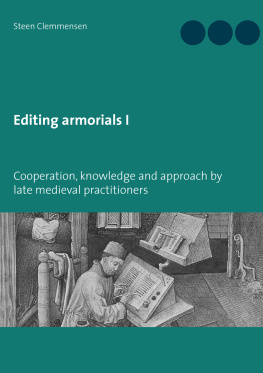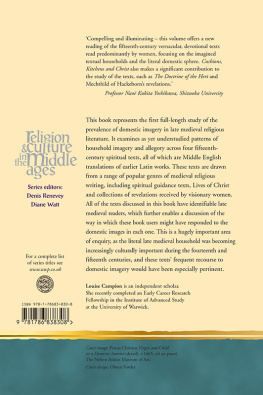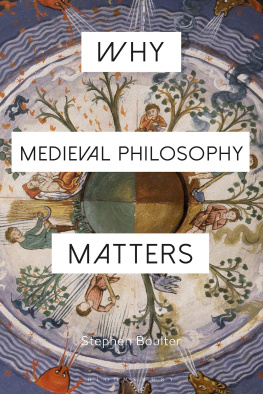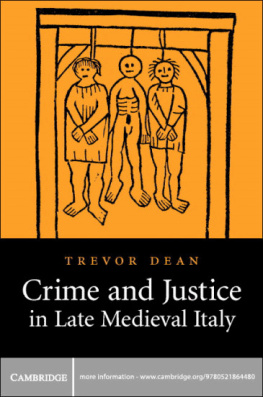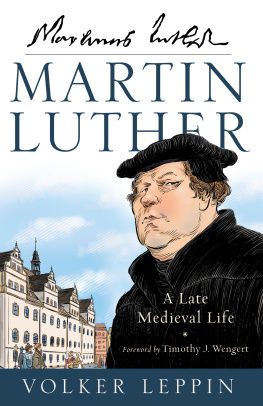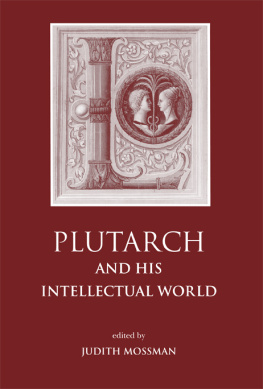Mossman Stephen - Marquard Von Lindau and the Challenges of Religious Life in Late Medieval Germany
Here you can read online Mossman Stephen - Marquard Von Lindau and the Challenges of Religious Life in Late Medieval Germany full text of the book (entire story) in english for free. Download pdf and epub, get meaning, cover and reviews about this ebook. year: 2010, publisher: Oxford University Press, Incorporated, genre: Science. Description of the work, (preface) as well as reviews are available. Best literature library LitArk.com created for fans of good reading and offers a wide selection of genres:
Romance novel
Science fiction
Adventure
Detective
Science
History
Home and family
Prose
Art
Politics
Computer
Non-fiction
Religion
Business
Children
Humor
Choose a favorite category and find really read worthwhile books. Enjoy immersion in the world of imagination, feel the emotions of the characters or learn something new for yourself, make an fascinating discovery.

- Book:Marquard Von Lindau and the Challenges of Religious Life in Late Medieval Germany
- Author:
- Publisher:Oxford University Press, Incorporated
- Genre:
- Year:2010
- Rating:5 / 5
- Favourites:Add to favourites
- Your mark:
- 100
- 1
- 2
- 3
- 4
- 5
Marquard Von Lindau and the Challenges of Religious Life in Late Medieval Germany: summary, description and annotation
We offer to read an annotation, description, summary or preface (depends on what the author of the book "Marquard Von Lindau and the Challenges of Religious Life in Late Medieval Germany" wrote himself). If you haven't found the necessary information about the book — write in the comments, we will try to find it.
Mossman Stephen: author's other books
Who wrote Marquard Von Lindau and the Challenges of Religious Life in Late Medieval Germany? Find out the surname, the name of the author of the book and a list of all author's works by series.
Marquard Von Lindau and the Challenges of Religious Life in Late Medieval Germany — read online for free the complete book (whole text) full work
Below is the text of the book, divided by pages. System saving the place of the last page read, allows you to conveniently read the book "Marquard Von Lindau and the Challenges of Religious Life in Late Medieval Germany" online for free, without having to search again every time where you left off. Put a bookmark, and you can go to the page where you finished reading at any time.
Font size:
Interval:
Bookmark:
The Passion
The crucifixion of Christ stands at the very centre of the Christian religion as a moment of profound theological and devotional significance. Its position in the theological economy of salvation was cast in the new light of the theory of satisfaction, and thereby elevated to a new level of importance for the entirety of the Middle Ages, by Anselms Cur Deus homo. In the devotional framework of the later Middle Ages, meanwhile, its position went beyond that of primus inter pares alongside other elements of central soteriological significance: specifically the incarnation and the resurrection. Instead the Passion formed the central apex of the faith. Richard Kieckhefer has observed this focus on the Passion in the devotional mentalit of the fourteenth century to be so exclusive as to eliminate almost entirely the significance of the resurrection, with which one would otherwise, on theological grounds, expect the Passion to be intimately associated. Marquards elder contemporary Ludolf von Sachsen (d. 1378) described the cross as the culmination of Scripture, the Passion as the epitome of perfection, and Christs death as consummation of all Christian teaching. Knowledge of the Passion enables the individual to know everything necessary for salvation:
[I]n cruce Domini, est finis Legis et Scripturae, in Passione ejus, summa omnis perfectionis, in morte ipsius, est consummatio omnis sermonis. Unde Apostulus dicebat: Non judicavi me aliquid scire inter vos, nisi Jesum Christum, et hunc crucifixum [1 Cor. 2: 2], nempe quia hoc scire, est omnia scire quae ad salutem spectant.
(In the cross of the Lord is the culmination of the law and of Scripture; in his Passion is the apogee of every perfection; and in his death is the consummation of all his teaching. Wherefore the Apostle said, I resolved not to know anything amongst you, except for Jesus Christ, and him crucified, because to know this is indeed to know everything that pertains to salvation.)
The growing theological and devotional focus more broadly on the humanity of Christ in the eleventh and twelfth centuries had, as Giles Constable has demonstrated, made Christs life on earth into the supreme exemplar for imitation. The apostles, saints, and church fathers came to be seen as those who had already followed in his footsteps: edifying examples, perhaps, but only models for imitation insofar as they had imitated Christ. This literal imitation of Christ found its greatest and most obvious exponent in Francis of Assisi (d. 1227) and became a normative feature of late medieval piety. The construction of the image of the Passion is thus the ideal place to begin an analysis of Marquards works.
From the late twelfth century, the well-known developments in medieval devotion to the Passion were accompanied by a massive expansion in the production of new literature of all genres on the subject, an expansion that continued into the early modern period and beyond. The fourteenth century witnessed the production of compendious narrative treatises on the life and Passion of Christ, of which Ludolfs Vita Christi, from which the quotation above was drawn, is distinguished by its particular enormity. In the mid-fourteenth century the first Passion narratives in the German vernacular began to emerge. Recent work by Thomas Bestul, Eric Saak, and in particular Tobias Kemper has given new attention to the identification,
The extensive elaboration of the account in narrative texts was not a purely literary phenomenon, but reflected a deepening interest in the events of the Passion and the increased desire to know those events more intimately. Saak explains this in terms of a wider cultural shift, on the basis of his examination of Jordan von Quedlinburgs Meditationes de passione Christi. He argues that the elaboration of the Passion story in the Middle Ages both reflected and served to constitute the broader process of the self-definition of Christian society. This is to be seen specifically in the emphasis on the Jewish role in and responsibility for the crucifixion, which Saak interprets (in conscious accordance with the theories of R. I. Moore) in terms of the definition of a Christian society against outsiders. The demonization of the Jews in Passion texts, he argues further, was not so much a racial demonization of the Jews qua Jews, but a demonization of Jews as There is certainly something to this argument, and we will return to Saaks position later, once we have considered Marquard himself. But even if we accept it at this stage, it does not explain the whole interest in elaborating the Passion narrative, much of which elaboration had nothing to do with the Jews.
Kemper has shown that the intention of medieval writers in using the Old Testament exegetically and typologically to write the history of the Passion differed markedly from that of the Gospel authors themselves. The evangelists were concerned to use Scripture to show Christ as the innocent man suffering and the just man condemned, and to support the faith in Christ as the awaited Messiah and son of God. None of this was doubted in the Middle Ages: whilst the exegetical and typological methods of utilizing Scripture to construct a narrative of the Passion may have been similar, the purpose could not be. This purpose was more simple: to know the history of the Passion and the life of Christ more intimately. Kemper roots the origins of this desire in the new reception of apocryphal texts from the twelfth century onwards, and the contemporaneous and similarly novel interest, stimulated by the Crusades, in the relics of the Passion. The medieval texts themselves justify their enterprise with reference to the incomplete and inconsistent status of the evangelical accounts. The continuation of the narrative elaboration in the later Middle Ages was a feature of contemporary contemplative practice: the requirement to meditate in prayer on every detail of the Passion and each individual suffering of Christ.might be regarded as the positive side of the coin, in contrast to (but not incompatible with) the negative side: namely Saaks interpretation of the elaborated Passion narratives as a sequence of admonitions, of things not to do and attitudes not to hold.
Much of the elaboration of the Passion story consisted of an increasingly graphic and ultimately gruesome focus on the bodily sufferings of Christ. The earliest Passion narrative to be written originally in German, the well-known Christi Leiden in einer Vision geschaut, was produced most likely in the second quarter of the fourteenth century, and is already at this early stage a particularly noteworthy representative of the exceptionally graphic depictive tradition. It survives in three different recensions and purports to contain a nuns vision of the Passion, from the arrest of Christ to the resurrection. All versions consist almost entirely of narrative, with very little additional commentary or guidance in contemplative practice. The prologue, which Pickering considered to be an integral component of the original version, describes how the nun desired that Christs Passion simply be more intimately known to her. Her thoughts switched from the incarnation to Christs deeds and to his suffering, as she sought that which would stimulate her desire for the Passion:
Nu begerde sy dat ir dat lyden Christi vns heren gruntlich zo hertzen gienge vnd arbeite sich darna mit vil begerden. Nu gedechte sy an syn komen in menscheliche nature, Nu an manche wunnencliche doegende die he dem menschen gedaen hatte, Nu an syn demoedich lyden dat he vmb syne doegent geleden hait, vnd gedechte hyn vnd her, so wat sy vant dat ir begerde reitzen solde zo Christus lyden.
(Now she desired that the Passion of Christ our Lord would enter her heart of hearts, and applied herself to this end with great desire. Now she thought about his advent in human nature; now about the many delightful virtues that he had manifested to mankind; now about his humble Passion, which he suffered for his virtue; and she thought about this and about that, about whatever she found that should stimulate her desire for Christs Passion.)
Font size:
Interval:
Bookmark:
Similar books «Marquard Von Lindau and the Challenges of Religious Life in Late Medieval Germany»
Look at similar books to Marquard Von Lindau and the Challenges of Religious Life in Late Medieval Germany. We have selected literature similar in name and meaning in the hope of providing readers with more options to find new, interesting, not yet read works.
Discussion, reviews of the book Marquard Von Lindau and the Challenges of Religious Life in Late Medieval Germany and just readers' own opinions. Leave your comments, write what you think about the work, its meaning or the main characters. Specify what exactly you liked and what you didn't like, and why you think so.


